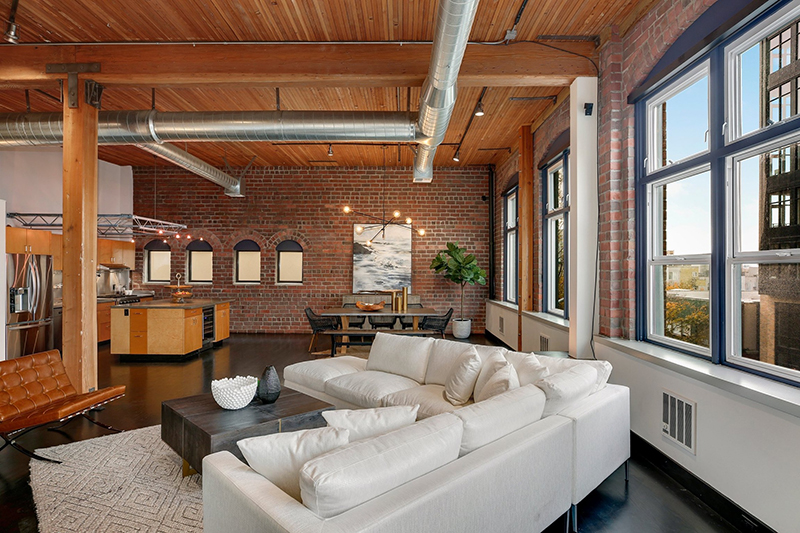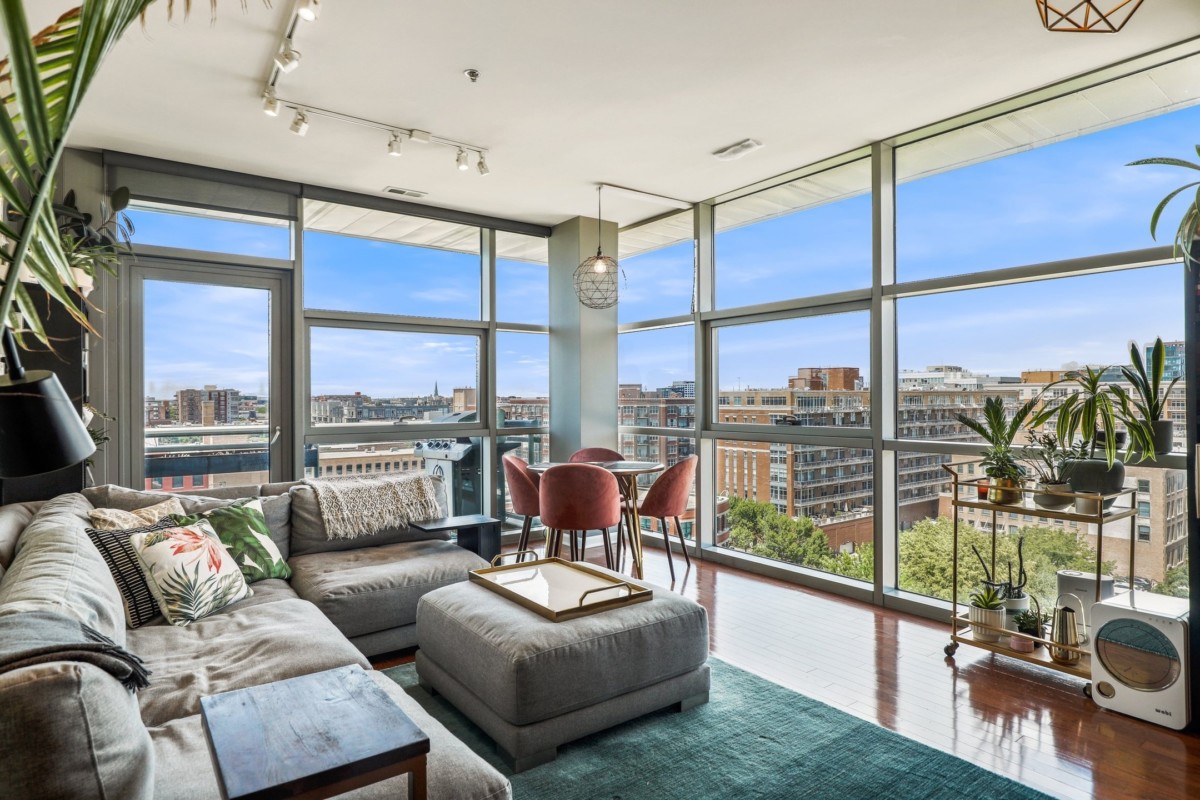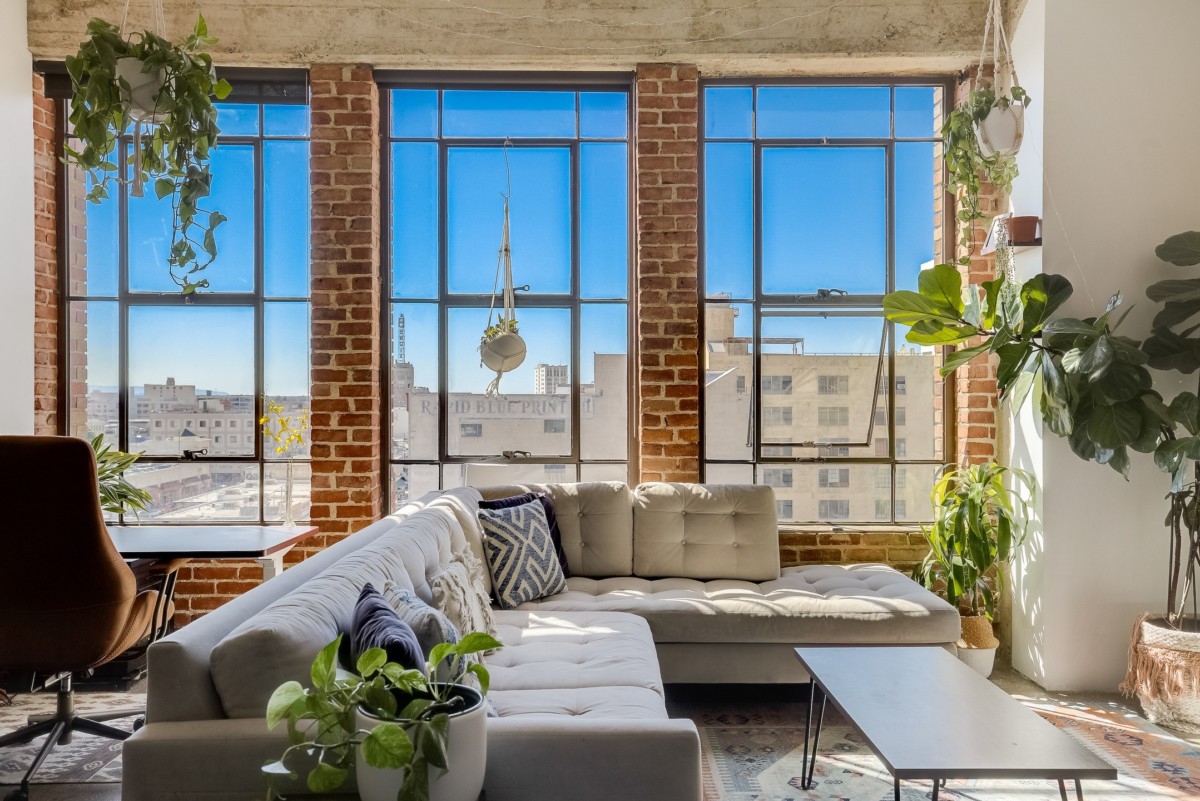What is a Loft Apartment? Living Life at the Top
Living the city life can bring lots of the hustle and bustle, sprawling views of the skyline, and countless new activities and restaurants to check out every day of the week. If you’re renting an apartment in New York, NY, or living in San Francisco, CA, there’s a chance you’re touring a variety of different apartments, including studios. But if you’re tired of looking at the same square layout, it’s time to check out the original studio – a loft apartment.
High ceilings, exposed brick, large living spaces, and big windows – that’s all found in loft apartments. You’ll have the characteristics of a studio apartment, with larger spaces and the same freedom to design your place how you’d like. Before deciding whether a loft is right for you, we’ll outline the types of loft apartment along with the pros and cons.

What is a loft apartment?
A loft apartment is a large space, typically over 1,000 square feet, that has one room. Aside from a separate bathroom, these apartments lack distinct rooms like bedroom(s), a kitchen, dining room, and living area. Additionally, lofts have open areas that blend all the rooms together, much like a studio apartment.
History of loft apartments
Ideal for cities, lofts emerged during the 1950s and 1960s in New York, NY, as manufacturing centers moved outside of the city. Many artists moved into these empty warehouses as they were less expensive alternatives to other types of housing in the city. It also gave them the freedom to work and live in the same location.
Common loft space characteristics
Lofts have unique features that set them apart from other apartment complexes. One of the most notable features is the loft’s high ceilings. You’ll also find floor-to-ceiling windows, making the apartment feel even more open. Since the unit is a converted warehouse, the interior walls are likely concrete or exposed brick, giving them an industrial look.

Types of loft apartments
On the surface, it may seem like lofts are all the same, but that’s not the case. You’ll find four different loft types as you begin your search, so let’s look at the differences.
Hard loft
Hard lofts are the original style of a loft apartment. It generally refers to a commercial or industrial space converted into a livable space. Hard lofts have an industrial loft’s charming and unique qualities, like exposed beams, brick walls, and unfinished ceilings.
Soft loft
Besides being fun to say, a soft loft is the more modern counterpart to the original loft and is often found in newer apartment complexes. They resemble hard lofts but aren’t located in former industrial buildings. Usually, soft lofts have a similar open-concept space but have more modern amenities, like built-in storage and shelves, newer appliances and utilities, and sleek designs. Soft lofts may be easier to find as they are not traditionally found in old warehouses.
Live-work loft
A live-work loft is a residential space zoned for both residential and commercial use. For example, you can use this space if you’re an entrepreneur running a business from your home. Most commonly, this appeals to artisans such as painters, ceramicists, etc. Note that each state has different rules regarding how live-work spaces are zoned. Some states may have a strict list of qualifications that the space must meet before zoning.
Loft conversion
As you search for an apartment, you may run into the term “loft conversion.” This can mean one of two kinds of spaces. A loft conversion may refer to an entire apartment in an industrial building or, more commonly, a renovated attic space. Often, loft conversions are in a house where the homeowner has renovated an attic or upper level of their home into a loft space. This type varies drastically from traditional hard lofts.
What is a loft vs. studio apartment?
Since lofts and studios are both open-concept apartments, it may seem like the two are the same, but in reality, they aren’t. Studio apartments are much smaller in square footage, have tighter kitchens, and are generally less expensive. On the flipside, lofts tend to be larger in square footage, feel more spacious due to their vaulted ceilings, have a full kitchen, and are typically more expensive. However, that doesn’t mean you can’t find a loft that falls within your budget.
Despite their differences, these two apartment styles have some similarities. Both spaces typically have two distinct rooms – a bathroom and a living space that includes your kitchen, living room, dining space, and sleeping area.
Loft vs. apartment
To better understand a loft, let’s take a look at the difference between a loft vs an apartment. Standard apartments come in various layouts and numbers of rooms: studio, urban one-bedroom, one-bedroom, and two-bedroom. They typically have a separate bedroom, kitchen, or dining space – unless it’s a studio.
Apartments are more likely to have additional amenities like pools, rooftop lounges, on-site gyms, dog runs, etc. These features are not often found in lofts because they were once a warehouse or industrial building. However, that doesn’t mean you won’t find the occasional rooftop garden or courtyard lounge.

Pros and cons of a loft
Choosing the right apartment comes down to many factors – budget, square footage, location, amenities, etc. And weighing the pros and cons of a loft apartment can help you decide if the loft life is right for your needs.
Advantages of lofts
Open-concept and spacious: One of the biggest advantages of a loft is the open-concept and spacious layout. You’ll have plenty of space compared to a traditional studio apartment, and high ceilings only add to the spacious feeling.
Creativity to design the space: Since loft spaces are essentially a blank canvas, you can design the apartment in any style or create as many unique spaces as you’d like. Do you want to add a room divider to create a cozy reading corner? Or would you rather have a murphy bed to make entertaining in your home easier? The options for designing a loft are endless.
Unique characteristics: With hard lofts specifically, you’ll find plenty of unique charm and character that you may not find in a soft loft or newer apartment complex. Think floor-to-ceiling windows, exposed brick and beams, encased wiring running down your walls, a true semblance of the former industrial building you live in.
Location: One of the biggest pros of a loft is the location. Many lofts are located in cities with vibrant personalities like New York City, St. Louis, MO, Durham, NC, and San Antonio, TX, to name a few.
Disadvantages of lofts
Less storage space: With loft living, you’ll lack some of the traditional storage space that you may find in a standard apartment. You won’t often find closets or built-in storage units, meaning you’ll have to get creative when storing your belongings.
Fewer amenities: A loft space typically has fewer amenities than traditional apartments due to the building’s age and structure. Many newer apartments are known for their amenities like on-site gyms, package rooms, rooftop decks, and communal gathering spaces. You probably won’t find these in buildings with hard lofts. However, if you’re looking at soft lofts in recently built or updated apartment complexes, you may find these amenities.
Higher utility costs and rent price: Since loft spaces are often in old buildings or converted industrial properties, they tend to be less energy efficient, driving up apartment utility costs. If you’re looking for hard lofts, expect to see rent prices reflect their scarcity. Unlike soft lofts located in newer apartment complexes, there is a finite number of hard lofts. They’re a popular choice, so don’t be surprised to see higher rent. However, that doesn’t mean you can’t find a hard loft in your price range.
Noise: Apartment living is noisy no matter where you live. You’ll likely hear your neighbors next door or above you and, of course, street noise. However, you may hear that the noise in a loft is more noticeable. These older buildings have less insulation and often have wood flooring, meaning you may hear your neighbors and street noise more often. Although, if you’ve lived in an apartment for a while, noise may not be so bothersome.
Is a loft right for you?
Ultimately renting the right apartment depends on many factors from your desired budget and square footage to location and amenities. If you’re looking to live in a city and rent a space filled with character and cool qualities, then consider a loft for your next apartment. However, if you’re looking for an updated space that’s budget friendly, then a loft may not be right for you. At the end of the day, there are countless apartment styles to fit your needs and wants.
The post What is a Loft Apartment? Living Life at the Top appeared first on Redfin | Real Estate Tips for Home Buying, Selling & More.
